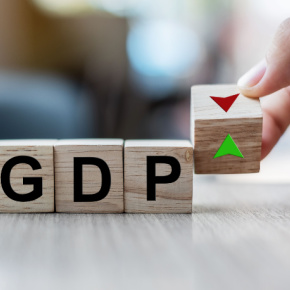By:
Kevin Flanagan, Head of Fixed Income Strategy
Key Takeaways
- Speculation is mounting that President Trump may announce a new Federal Reserve chair well before Jerome Powell’s term ends in May 2026, potentially as early as this summer or fall.
- With Fed Governors Waller and Bowman—both Trump 1.0 nominees—hinting at support for July rate cuts, investors are weighing whether recent policy signals reflect genuine outlooks or strategic posturing for the chair position.
- A premature Fed chair announcement could risk undermining the Fed’s perceived independence, unsettling bond markets and potentially creating unintended consequences.
On top of all the geopolitical headlines the money and bond markets have had to contend with of late, there has been another news story that has recently garnered its own fair share of headlines: a new Fed chair. This development comes around every four years, but in the current instance, the process of choosing a new Fed leader is capturing far more attention, to say the least. As a result, recent news stories have been published that suggest it is possible this time around that the process of nominating a new Fed chair could be different than what investors are more accustomed to.
It is certainly no surprise that, since he took office back in January, President Trump hasn’t been particularly happy with Fed Chairman Jerome Powell. But that’s where we have to interject this blog post’s spoiler alert: the president cannot fire the Fed chair just because he isn’t cutting interest rates.
That brings us to the next point. Powell’s term as Fed chair expires in May 2026, so the president will only have to contend with the current situation regarding Fed leadership for about another 10 months or so. Indeed, Powell has made it clear he is not stepping down early, so start the shot clock, as it were.
Typically, a new Fed chair isn’t chosen until about three to four months prior to the current person’s term expiring. The conjecture at the present time is that the president may speed up this part of the transition and actually announce a new pick in either the summer or fall of this year.
In terms of possible front-runners for the position, former Fed Governor Kevin Warsh and current Treasury Secretary Scott Bessent have been mentioned. But don’t forget current Fed Governors Waller and Bowman. Interestingly, both of these Fed officials recently stated they could potentially support a rate cut as soon as the July FOMC meeting. Now, who do you think would have liked that type of messaging? Was this some kind of political posturing for the chair position or just typical forward guidance from these two governors? One other interesting coincidence is that Waller and Bowman were both nominated by President Trump during his first term.
OK, enough of this conspiracy theory chatter. Back to the possibility that a new chair could be announced much sooner than what is typically the case. The reason behind this conjecture is that the new Fed leader would then be serving as a sort of “shadow Fed chairman” until they would officially assume the role. As a result, the announced Fed chair could then undermine Powell over the next 10 months or so and essentially influence bond market expectations for what future monetary policy will eventually hold, aka rate cuts.
Would any of the candidates named here actually “do such a thing”? This is where I tap the brakes on the whole concept of a “shadow Fed chairman.” It is one thing to say something when you are not in the official position of the most powerful central banker on the globe and another when you sit in the chair (no pun intended) and realize the enormous responsibility that comes with the job from both a monetary policy and financial markets perspective.
Warsh, Waller and Bowman have either sat or currently sit on the FOMC decision-making body and have witnessed firsthand this perspective. Secretary Bessent has already walked back some of his thoughts from before becoming Treasury secretary and proved to be a voice of reason after the financial markets’ reactions to the Liberation Day announcement.
Conclusion
Perhaps one of the most overlooked impacts of this “shadow Fed chairman” is the bad precedent it would set and that the Fed could then be viewed as losing its much-treasured independence in the eyes of the bond market. This notion of policy independence is not taken lightly by bond investors, and any breach of this concept could have unintended harmful effects on interest rates—the exact opposite of what the “shadow” plan was supposed to achieve.
Originally posted on July 1, 2025 on WisdomTree blog
PHOTO CREDIT: https://www.shutterstock.com/g/peshkova
VIA SHUTTERSTOCK
DISCLOSURES
U.S. investors only: Click here to obtain a WisdomTree ETF prospectus which contains investment objectives, risks, charges, expenses, and other information; read and consider carefully before investing.
There are risks involved with investing, including possible loss of principal. Foreign investing involves currency, political and economic risk. Funds focusing on a single country, sector and/or funds that emphasize investments in smaller companies may experience greater price volatility. Investments in emerging markets, currency, fixed income and alternative investments include additional risks. Please see prospectus for discussion of risks.
Past performance is not indicative of future results. This material contains the opinions of the author, which are subject to change, and should not to be considered or interpreted as a recommendation to participate in any particular trading strategy, or deemed to be an offer or sale of any investment product and it should not be relied on as such. There is no guarantee that any strategies discussed will work under all market conditions. This material represents an assessment of the market environment at a specific time and is not intended to be a forecast of future events or a guarantee of future results. This material should not be relied upon as research or investment advice regarding any security in particular. The user of this information assumes the entire risk of any use made of the information provided herein. Neither WisdomTree nor its affiliates, nor Foreside Fund Services, LLC, or its affiliates provide tax or legal advice. Investors seeking tax or legal advice should consult their tax or legal advisor. Unless expressly stated otherwise the opinions, interpretations or findings expressed herein do not necessarily represent the views of WisdomTree or any of its affiliates.
The MSCI information may only be used for your internal use, may not be reproduced or re-disseminated in any form and may not be used as a basis for or component of any financial instruments or products or indexes. None of the MSCI information is intended to constitute investment advice or a recommendation to make (or refrain from making) any kind of investment decision and may not be relied on as such. Historical data and analysis should not be taken as an indication or guarantee of any future performance analysis, forecast or prediction. The MSCI information is provided on an “as is” basis and the user of this information assumes the entire risk of any use made of this information. MSCI, each of its affiliates and each entity involved in compiling, computing or creating any MSCI information (collectively, the “MSCI Parties”) expressly disclaims all warranties. With respect to this information, in no event shall any MSCI Party have any liability for any direct, indirect, special, incidental, punitive, consequential (including loss profits) or any other damages (www.msci.com)
Jonathan Steinberg, Jeremy Schwartz, Rick Harper, Christopher Gannatti, Bradley Krom, Kevin Flanagan, Brendan Loftus, Joseph Tenaglia, Jeff Weniger, Matt Wagner, Alejandro Saltiel, Ryan Krystopowicz, Brian Manby, and Scott Welch are registered representatives of Foreside Fund Services, LLC.
WisdomTree Funds are distributed by Foreside Fund Services, LLC, in the U.S. only.
You cannot invest directly in an index.



